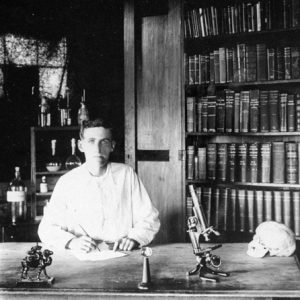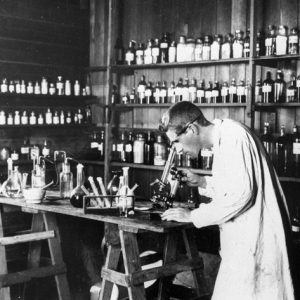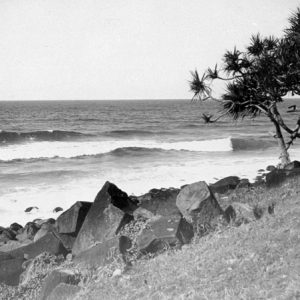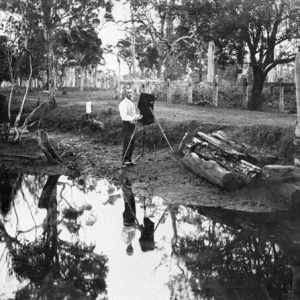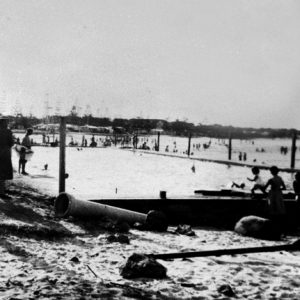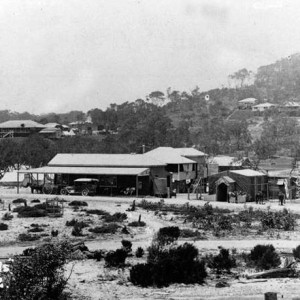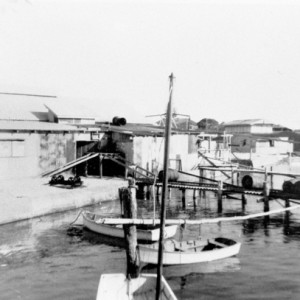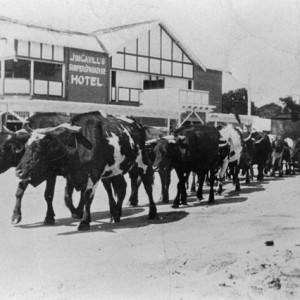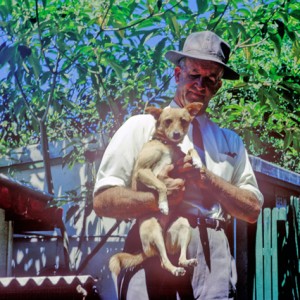
Guy William Hunt was born in Beenleigh on 16 March 1884 to William Edward Augustus Hunt and Fanny Sylvia Rain Agnew. As a consequence of his mother’s death during childbirth, Guy was sent as an infant to Southport to be raised by his aunt, Miss Agnes Agnew, one-time manager of The Pacific Hotel.
Guy completed studies in the field of science, which seemingly spurred on his interests in the pharmaceutical industry and photography. During the early decades of the twentieth century he worked for Southport’s only dispensing chemist, Fred Moore, in Moore’s Nerang Street pharmacy. A desire to improve health standards of the day prompted him to begin manufacturing medicines, including aspirin which he produced for soldiers during the First World War.
The Nerang Street pharmacy where Guy worked was likely divided into two rooms, each with a specific purpose. A retail area, open to the public, where cosmetics, prepared medicines, baby items and gifts were available for purchase and a dispensary, located at the rear of the premises, where treatments and remedies were prepared. Specialised equipment such as glass measures, test tubes, funnels, scales, mortar and pestle, pill making machines and cutters, microscopes, water stills and a furnace would have been required on site.
- Guy Hunt, photographer and pharmacist, Southport, circa 1912. Photographer unknown
- Guy Hunt, Moore’s pharmacy, Southport, circa 1905. Photographer unknown
- Ocean scene from Burleigh Headland, circa 1920. Guy Hunt, photographer
- Guy Hunt with camera in natural setting, Southport, circa 1905. Photographer unknown
Guy Hunt was a keen naturalist and many of his photographs capture the natural environment of the Gold Coast. The earliest photos attributed to him date from the very late 1890s. Subject matter include landscapes, scenes of the Broadwater, delicate studies of flora, cloud formations, crowds at gatherings, local events of note, buildings, and interior shots of the pharmacy in which he worked. He used a Thornton-Pickard box camera, which produced highly detailed negatives on glass plates measuring 20cm x 15cm. While his photograph taken in 1910 of the transit of Halley’s Comet across the night sky has survived, the negative did not. In later days Guy stored many of his negatives on a shelf in a backyard shed. Unfortunately damage by white ants caused the shelf to collapse and many glass plates were destroyed and only 31 of his glass plate negatives are known to exist today.
To what extent Guy undertook photography from a commercial standpoint is unknown, although he appears in the Directory of Early Australian Photographers as a professional photographer based in Southport from 1903-1923. Some photographs that became subject matter for greeting cards and early postcards of Southport are believed to be his work. His home in Garden Street contained a darkroom for developing negatives as well as a dispensary where he could continue his studies in chemistry. Guy later purchased a densely timbered property in Blake Street, Southport for £5.
Guy enjoyed taking his four step children by horse and cart into the bush where they would embark on rambling walks where he shared his love and knowledge of the natural environment. In later years, he worked in road construction and was often found after a hard days’ work sitting in a reclining chair in the garden. He was remembered by family members as an artistic and intelligent man who preferred to live a simple life. By all accounts he was humble, quiet and had a preference for solitary pursuits. Guy Hunt was hospitalised after suffering a series of strokes and died on 21 May 1950.
Sources of information and further reading
- Guy Hunt gave us windows to the past (1986, January 31). Gold Coast Bulletin (Southport, Qld.), p. 26-27.
- A Coast lifesaver (in the pharmaceutical sense) (1974, August 17). Gold Coast Bulletin (Southport, Qld.), p.16.
- Deacon, Margaret. [Research on Guy Hunt]. December 2013, p. 2, 6-7.
